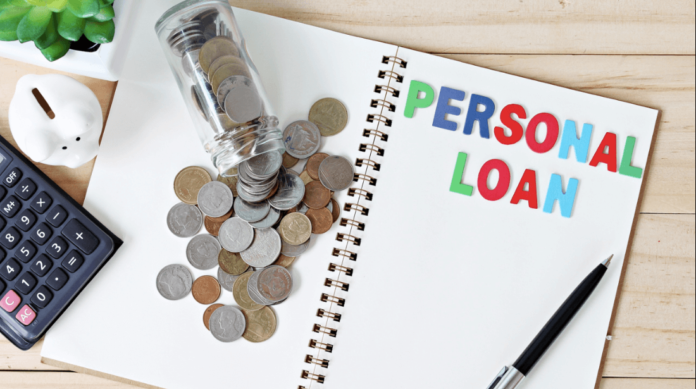Are you in need of extra cash to fund a home renovation, wedding, or other personal expenses? A Personal Loan might be the solution for you. Offering competitive interest rates and flexible repayment terms, a Personal Loan can help you achieve your financial goals without breaking the bank. But before you jump into applying, there are some important things to know about this popular loan option. In this article, we’ll explore everything you need to know about Chase Personal Loan so that you can make an informed decision on whether it’s right for your needs. So let’s dive in!
What is a Chase Personal Loan?
A Chase Personal Loan is an unsecured loan that can be used for a variety of personal expenses, such as home renovations, medical bills or debt consolidation. Unlike secured loans, which require collateral like a car or house to secure the loan, unsecured loans do not require any form of collateral.
Chase Bank offers personal loans ranging from $1,000 to $100,000 with repayment terms between 12 and 84 months. The interest rate you receive will depend on your credit score and other financial factors. However, borrowers with excellent credit may qualify for rates as low as 6.99% APR.
One key benefit of a Personal Loan is its flexibility in use – you can use the funds for almost anything you need without restrictions. Additionally, Chase provides fast funding options so that you can quickly access your money once approved.
It’s important to note that while an unsecured personal loan doesn’t require collateral upfront, if you fail to make payments on time or default on the loan entirely there could be negative consequences down the line such as damaged credit and legal action by the lender.
How to Apply for a Chase Personal Loan
Applying for a Personal Loan is a straightforward process that can be done online, over the phone, or in person at your nearest Chase branch. To apply online, you will need to provide basic information such as your name, address, income details and social security number.
Once you have gathered all the necessary documents including pay stubs and tax returns for self-employed individuals or businesses applying for loans, you can submit them through the secure application portal on their website.
After submitting your application electronically once it’s completed; Chase may also require additional documentation such as proof of employment or identification before they approve your loan request.
If approved by Chase bank after meeting their credit requirements and other necessary conditions; the funds will typically be deposited into your account within a few business days. It’s important to remember that interest rates vary based on factors like credit score and loan amount borrowed.
Types of Personal Loans
Chase Bank offers two types of personal loans: secured and unsecured. A secured loan requires collateral, such as a car or savings account, whereas an unsecured loan does not require any collateral.
Secured loans typically have lower interest rates than unsecured loans because the bank has something to secure the loan with if you default on payments. However, if you cannot make your payments on time, you risk losing whatever asset is being used as collateral.
Unsecured loans are based solely on your creditworthiness and financial history. The amount you can borrow depends on several factors like your credit score, income, and debt-to-income ratio.
Both types of Personal Loans have fixed interest rates which means that your monthly payment will remain unchanged throughout the term of the loan. You can choose to repay your personal loan over a period of 12-84 months depending on which option works best for you.
It’s important to evaluate both options before deciding which type of Personal Loan may be right for you.
Alternatives to Chase Personal Loan
Looking for alternative options to Personal Loans? Here are a few suggestions that might work better for your financial situation.
Firstly, you can explore peer-to-peer lending platforms like LendingClub and Prosper. These platforms connect borrowers with investors who fund the loans at competitive interest rates. You’ll need a good credit score to qualify, but it’s worth checking out if you’re in need of financing.
Another option is to consider taking out a personal loan from your local credit union or community bank. They may offer lower interest rates and more flexible repayment terms than larger banks like Chase.
If you have equity in your home, a home equity line of credit (HELOC) could be an option as well. HELOCs allow you to borrow against the value of your home at a variable rate and use the funds for any purpose.
If you only need a small amount of money, consider using a low-interest credit card or seeking out short-term loans from online lenders like Avant or OppLoans.
Remember to compare all available options before making any decisions about borrowing money. Each alternative comes with its own set of pros and cons depending on your unique financial situation. Read more…
Conclusion
Chase Personal Loan are a viable option for customers looking for flexible loan options. With competitive interest rates and easy online application processes, these loans can help borrowers consolidate debt or finance large purchases. It’s important to consider all aspects of the loan before applying and ensure that it fits your financial goals and budget.
If you’re unsure whether a Personal Loan is right for you, there are other alternatives available such as credit unions, peer-to-peer lending platforms, or secured loans. Always do your research and compare different lenders to find the best fit for your needs.
Remember that taking out any kind of personal loan should be done with caution and consideration. Make sure you understand the terms of repayment and have a plan in place to pay back the loan on time.
If managed responsibly, Personal Loans can provide financial support when needed most.

